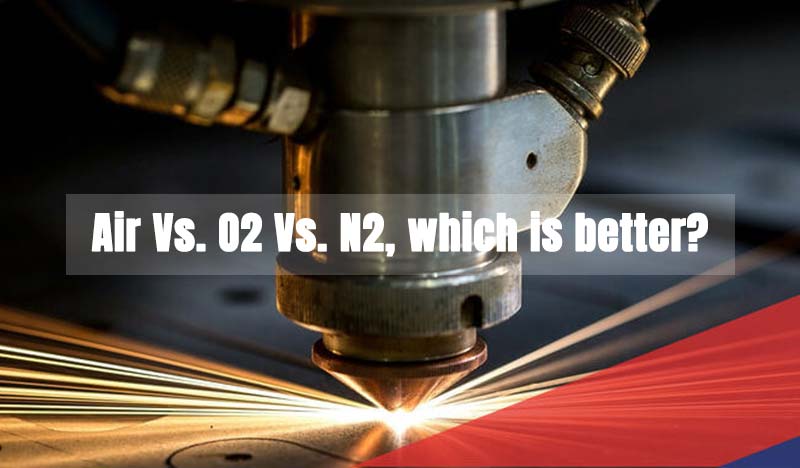
During cutting metal by fiber laser cutting machines, we usually use auxiliary gas to help us. Common additional gases include air, oxygen, and nitrogen. What are the differences between these three gases in the laser metal cutting process, and how should we choose? In today's post, EagleTec-CNC is going to talk about it in detail to you.
To understand the influence of each auxiliary gas on the laser cutting process, we should figure out their working principle. Let's dive in.

Compressed Air
The most obvious advantage of using air for fiber laser metal cutting is that we only need to consider the electricity costs of the air compressor and the whole fiber laser cutting machine itself, without additional costs for gas. This saves us a lot of auxiliary gas costs. The cutting efficiency of thin plates can be equivalent to nitrogen cutting, which is an economical and efficient cutting method.
But air cutting also has apparent shortcomings in the section.
• The cut section will have burrs, which require secondary processing to clean up, which is not productive for the entire product production cycle.
• The cut will be black, affecting the quality of the product. Many users favor laser cutting because of its high efficiency, precision, and quality. The disadvantages of air cutting make many customers abandon cutting with compressed air.
Oxygen
Secondly, oxygen cutting is the most common and traditional cutting method. The advantages of the fiber laser cutters using oxygen are mainly reflected in the cost of gas. In the processing of sheet metal, mostly carbon steel, the auxiliary gas does not need to be replaced frequently, increasing cutting efficiency and facilitating management.
But the drawback is that after oxygen cutting, an oxide film will remain on the surface of the cut section. If the workpiece with an oxide film is welded without any process, the folium will naturally drop after a long time, and the product will form virtual welding, affecting the welding quality.
Nitrogen
When oxygen is served as an auxiliary gas, an oxide film will be formed on the cut. Nitrogen cutting can prevent the oxide film and create an oxide-free cutting. The section of non-oxidative cutting is generally white and can be directly processed by welding, spraying, etc. The strong corrosion resistance also makes its application surface very wide.
To sum up, only oxygen cutting is appropriate when cutting thick carbon steel plates over 6mm. When cutting below 6mm, if there are high requirements for cutting quality and accuracy, it is recommended to use nitrogen cutting, which has high cutting efficiency and can directly proceed to the following processing process. Oxygen cutting speed is slow and is not recommended. When cutting below 6mm, if your requirement is only cut off and there are no precise process requirements, air cutting is recommended, with zero gas cost.
If you are looking for a fiber laser cutting machine of great quality with excellent after-sales support, please contact us freely.
Original Post from EagleTec CNC
Copyright: original works, for permission to reproduce, reprint, please be sure to indicate the form of hyperlinks to the original source of the article, author information, and this statement.
Copyright © Jinan EagleTec Machinery Co., Ltd. All Rights Reserved | Sitemap